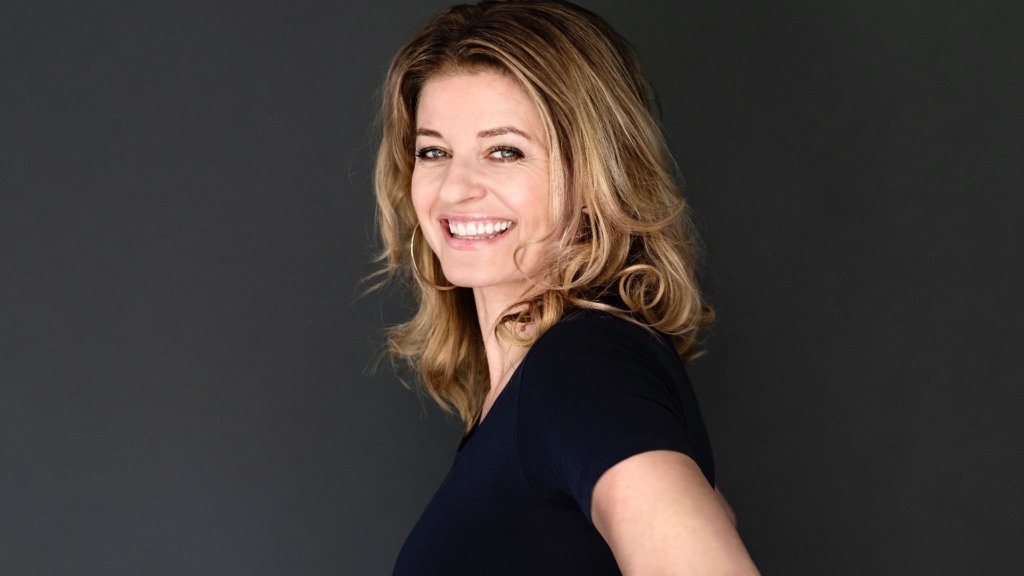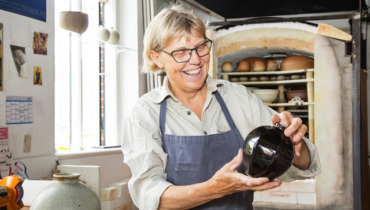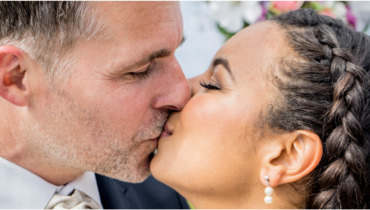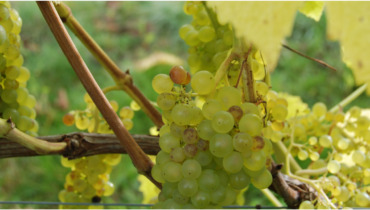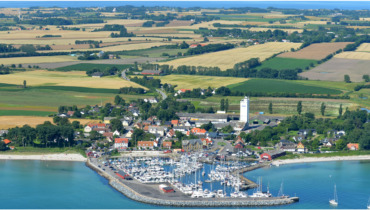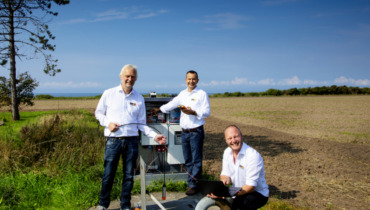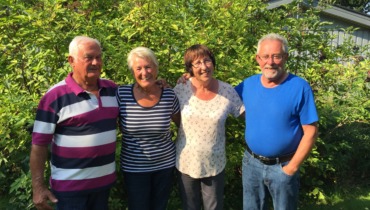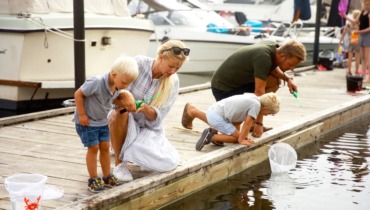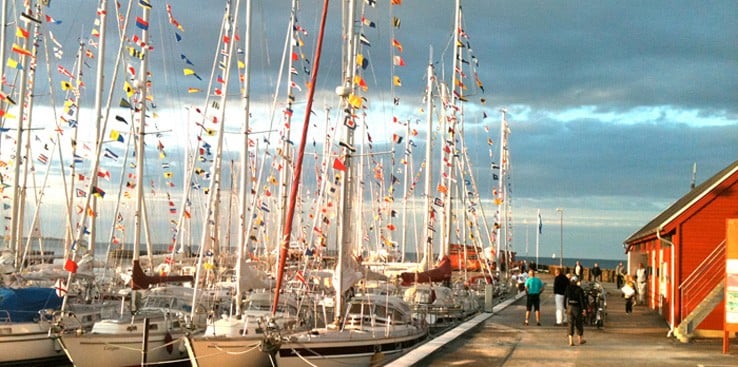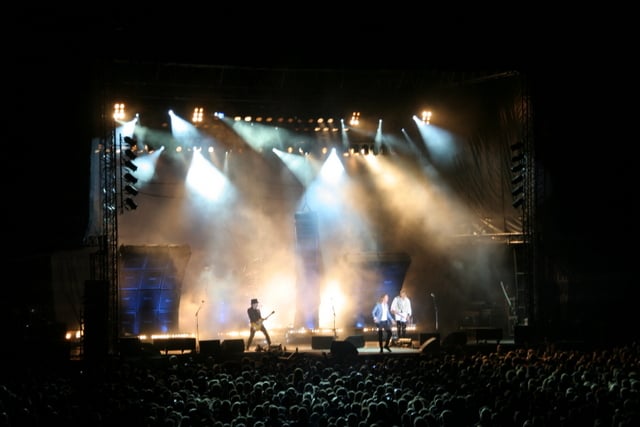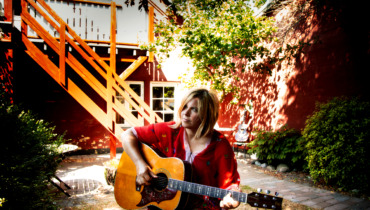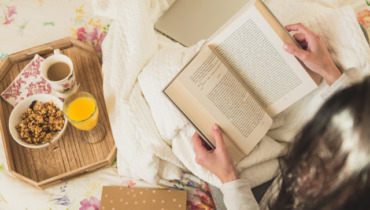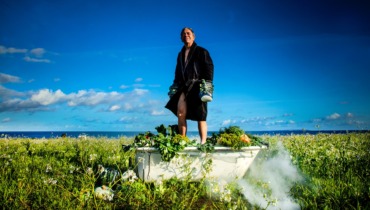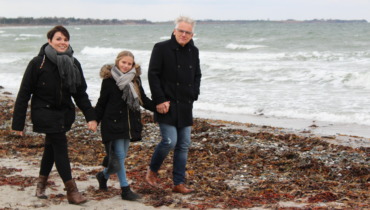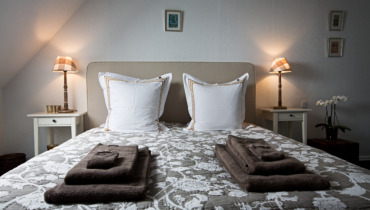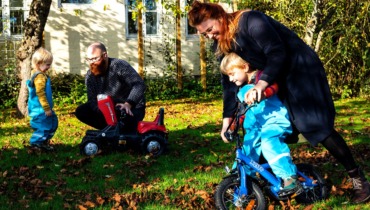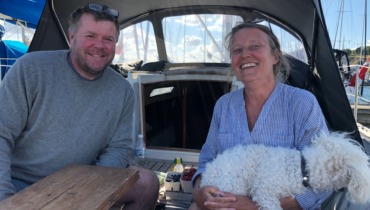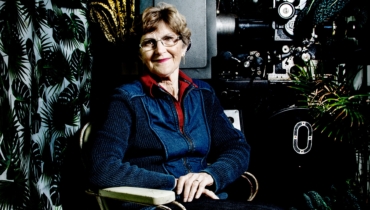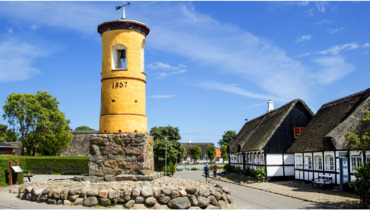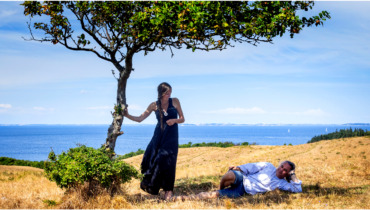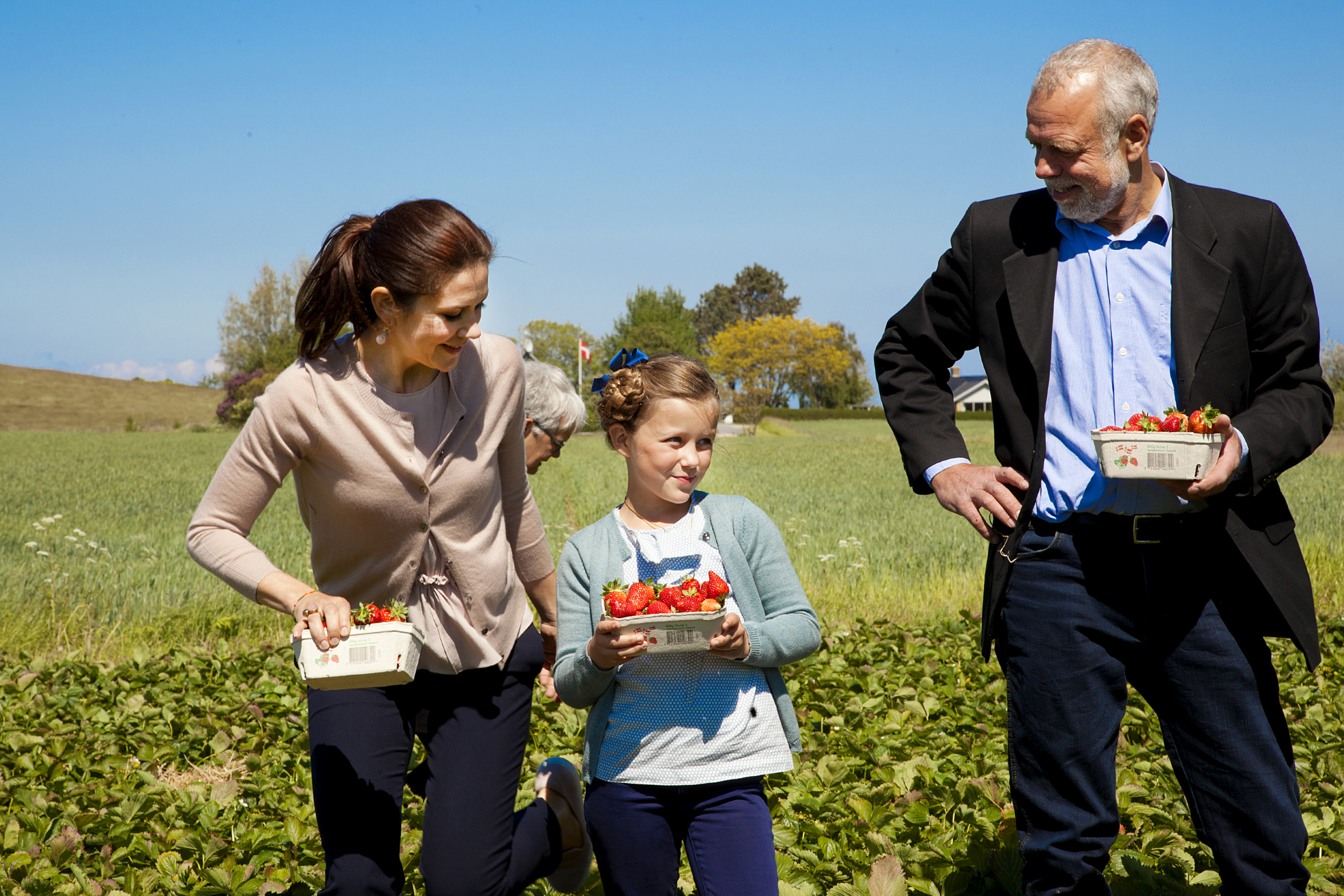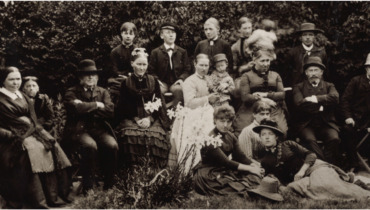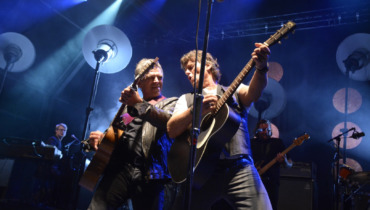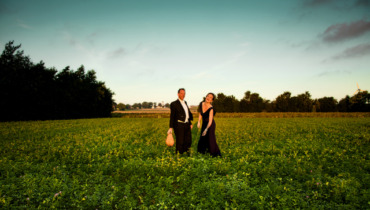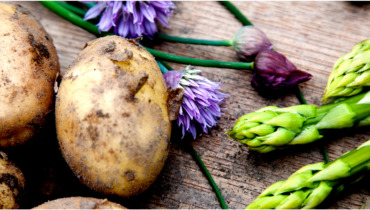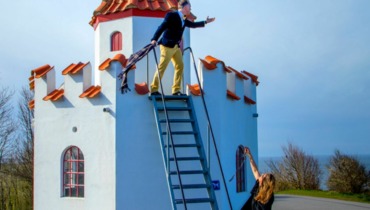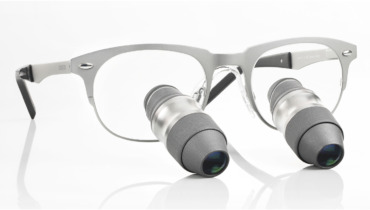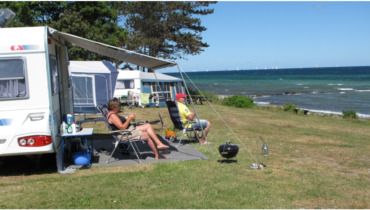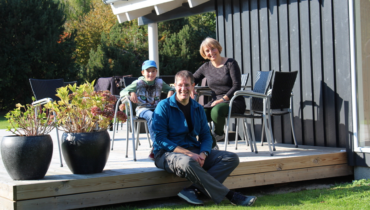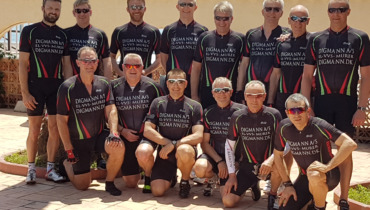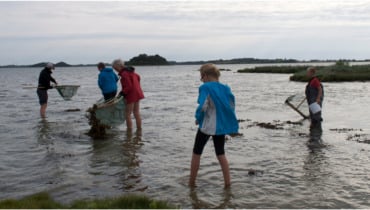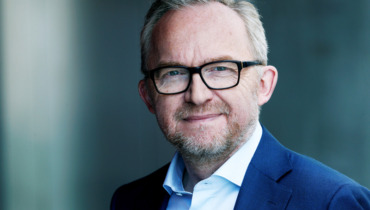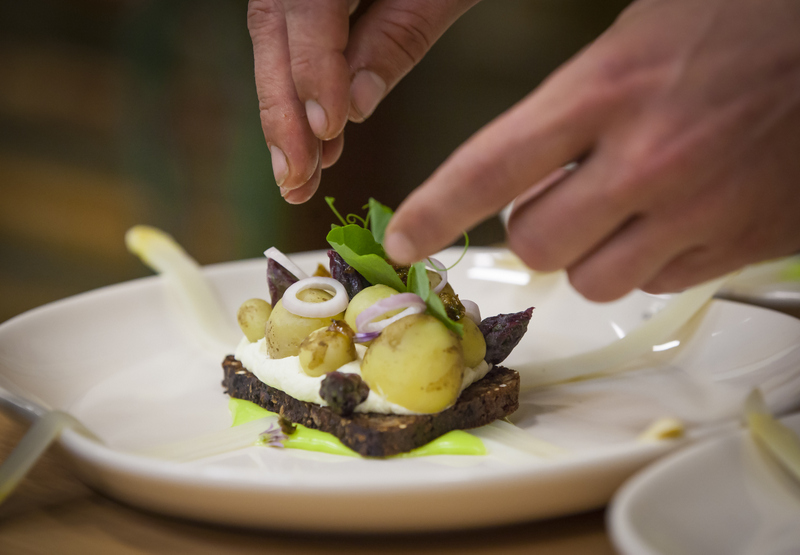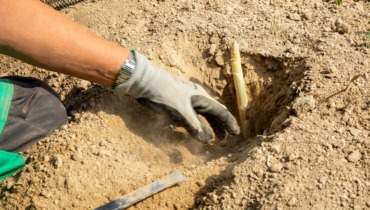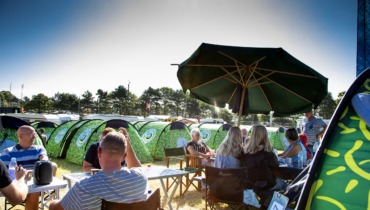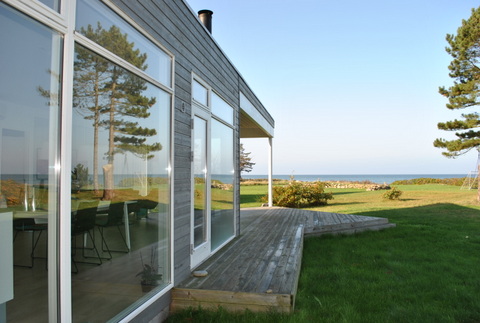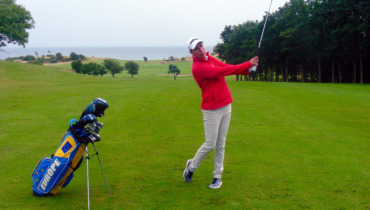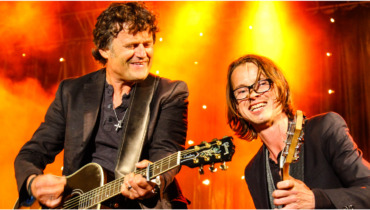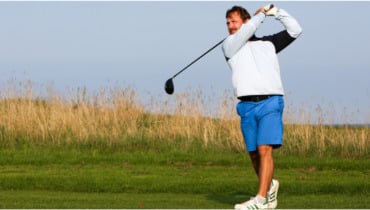With the quill dipped in Samsø
Sissel-Jo Gazan’s latest novel, “White Flowers”, takes place on Samsø in the early 90s. In the book, the reader is invited outdoors to the Samsø countryside and into the dark corners of the local community.
In your latest novel, “White Flowers”, a large part of the story takes place on Samsø, where you yourself spent some of your childhood. How would you describe Samsø in the year 1993, when the novel begins?
In 1993 I lived in Portugal, where I wrote my first novel, so I actually don’t think I was on the island in 1993 at all. However, I was there in 1994, because I came home from Lisbon and as I didn’t have a place to live for a few months, I stayed with my mother on her farm on the south island. I was rather confused at the time and didn’t quite know what I was meant to do or who I was. However, two good things happened to me whilst I was there: I lost ten kilos – which I had gained in Lisbon eating Pastel de nata – by running regularly in Brattingsborg Skov, which is definitely “my childhood forest” and I had my first novel accepted. I must have received a letter…or maybe a phone call? I certainly remember that when I heard the news, my mother was repairing the bike out in the yard and that I went out to tell her that my first novel was to be published.
We then cycled into Tranebjerg to Flinchs hotel and celebrated with a dinner. It was such a huge thing and the beginning of my career, although I didn’t realise that at the time – I didn’t know to what extent it mattered. So my impression of 1994: to return home and be restored by nature, which I have always loved about Samsø, especially down on the south island, where I know the forest and the beaches so well; and then of course, the cosy out-in-the-sticks thing of going to the local town’s hotel to have dinner when celebrating something.
The novel’s main characters live in Ejby and the two cousins, Jenny and Tessa, move about the village quite a bit. What has the small community nestled in the countryside meant to you personally in your childhood and how do you use that landscape today?
It was kind of like a ‘dream come true’ for me moving to Samsø. I was still a child and I loved suddenly being a bit ‘Little House on the Prairie’-like and it lived up to my notion of living in the country after I’d lived in the city for many years: collecting straw for our straw-fired boiler and sitting at the top of the stack; ordering things from Daell’s department store catalogue; announcing “we are going travelling” regarding a trip to the mainland; cycling up to the village on a light-filled summer’s evening to play by the village pond in Ørby; riding horses and taking the school bus.
It was also during those years that my relationship with nature was established, a relationship I ended up holding on to by studying biology and by including nature into all my novels. It was also natural for me that at some point I would write a novel set on Samsø with a main character closely connected to nature. I have myself had so many thoughts spending time in Samsø’s nature – I grew and developed as a human being while walking in the woods and by the sea.
Nature means a lot to the novel’s narrator, 14-year-old Jenny. How was your own relationship with nature when you grew up on Samsø?
Nature was very intense compared to the city – and I loved it. You feel more alive since nature is something you have to relate to everyday. There was a frozen winter where I couldn’t get to school because the road was covered in snow drifts, so we had to cross the fields to get there. I experienced everything in earnest when I moved to the island – proper winter and proper summer. It has certainly helped to shape who I am today and also made me aware of how important nature is for children.
You hold an M.Sc. in biology and in this and in previous novels you have made nature the central element. What does nature mean for you as an adult?
I am very closely connected to nature but I actually prefer to experience it from a little distance – through a microscope or by reading about it or taking a walk in it and admiring it and then going home again. I’m not the kind of person who stays in shelters every weekend and who just can’t get enough soil under their nails – not at all. But I am deeply fascinated by nature as a phenomenon and I don’t think I will ever stop writing about it and / or incorporate it into my writing.
“White Flowers” is also a gloomy tale of mistreatment, abuse, power and powerlessness and you have described your treatment of these dark subject matters as a kind of ‘artistic revenge’. Can you explain what ‘artistic revenge’ is all about?
Revenge is certainly a feeling we all know and one I might venture we have all experienced to a greater or lesser extent at some point in our lives. However, it isn’t good seeking revenge and it is also forbidden. So what do you do if you really crave revenge? And if the feeling consumes you? What if it’s impossible to move on until you have truly avenged yourself?
Then you take artistic revenge by, for example, doing as I have; one who has, over time, killed quite a few people on paper. This is what art can be; an arena for all that is forbidden, difficult and not allowed and this is what is so cool about being, for example, an author. The feeling of having the power to make many decisions that you would never make in real life – and get away with it unpunished.
The characters and several of the locations in the novel are fictional but you mention that the events have actually taken place – although not all on Samsø. What has it been like to let this darkness unfold in a place where you and your family have a large circle of friends? Have you been nervous about the reactions from the locals?
Yes, I’ve been quite nervous about it. I did a fair amount of research and at some point I asked an old acquaintance about an incident that I recalled from my childhood but one that I wasn’t 100% sure about – concerning a somewhat older man who slept with a very young girl in our village. I wasn’t quite sure exactly how young she was and I was in the process of trying to find out by asking people who also lived in the village at the time. The man I asked replied, “Isn’t that a little dangerous to write about?” and in that very moment I knew that this was precisely why I had to write the novel.
I felt obligated to write about it, precisely because it is dangerous and because the very reason people wouldn’t talk about it was the very same reason I couldn’t forget the events from all those years back. Because things happened that were completely wrong and that no children should experience. However, I would like to emphasise that what “White Flowers” is about, could just as well have taken place anywhere in society, throughout Denmark. This is what makes child abuse and child neglect so particular and horrifying – it happens everywhere, all the time and in all parts of society.
The reason why I decided this novel should take place on Samsø was a combination of the fact that for several years I have wanted to take subject matter from Samsø, because I grew up here and also because certain things become more visible in small communities. It was on Samsø that I first experienced the thought that something was wrong within some of the families I visited and the first time it dawned on me how safe and privileged I was myself. Things happened that shouldn’t have happened and the adults knew about it. Unfortunately, I don’t think it is characteristic solely of Samsø but rather of all communities. That’s why it’s so scary.
You live in Berlin with your children, who have grown up in a big – admittedly green – city. How do you feel your children adapt to the rhythm of Samsø when you are on holiday staying with your mother?
My three children all love Samsø and my mother’s farm and they have all dreamed of moving there at times. There’s just something about being a child and living in the country – you wind down, pootle about with grandma in the kitchen garden, fiddle in the soil, you can keep animals – that kind of thing. They completely relax and thrive wonderfully in the simple life where everything seems to follow a pattern and with plenty of outdoor activities. But children are also very adaptable and I really sense mine are as much city children as they are country children – they quickly adapt to the rhythm of both places.
Your eldest daughter, Lola, spent the whole of last summer on Samsø, where she, among other things, worked at Samsø Madsnedkeri (a restaurant in Tranebjerg). What do you feel Samsø can offer a 19-year-old girl like her?
I’m sure it meant a great deal to her working on Samsø and I believe she will stay in touch with her friends and colleagues. Sadly it was all quite restricted by Corona. I had hoped she’d be able to enjoy the Samsø Festival, many long summer nights and parties on the beach – all the things I used to do and enjoy. But it turned out to be a rather different year.
So I actually hope she’ll return to Samsø to work again and I know she’s talking to a couple of friends about it. I really enjoy returning to Samsø year after year myself. Meeting up with old friends at the Samsø Festival – both before I had children and as they were growing up – is really nice. I feel a huge sense of belonging and I do hope that my children experience this too, even though they have never been to school on the island or lived there permanently. The feeling of being away but also of belonging.
About Sissel-Jo
- Sissel-Jo was born in 1973.
- She lived on Samsø from 1984 and for some years thereafter.
- Sissel-Jo has written seven novels and received several awards for her writing, including the DR Novel Prize, the Readers’ Book Prize and the Golden Meat Axe, which was awarded for Denmark’s favourite crime novel 2000-2010.
- The breakthrough novel, “Dinosaur Feathers”, was sold in 17 countries and more than 200,000 copies were printed in Denmark alone.
- The film rights to “Dinosaur Feathers” and its sequel, “Swallow’s Graph”, have just been sold.
- Sissel-Jo’s mother, Janne Hejgaard, who is also an author, lives on Samsø.
- “White flowers” can be purchased in the Tourist Information office in Tranebjerg and in VisitSamsø’s webshop.
Last updated: 24/02/2021 15:28

